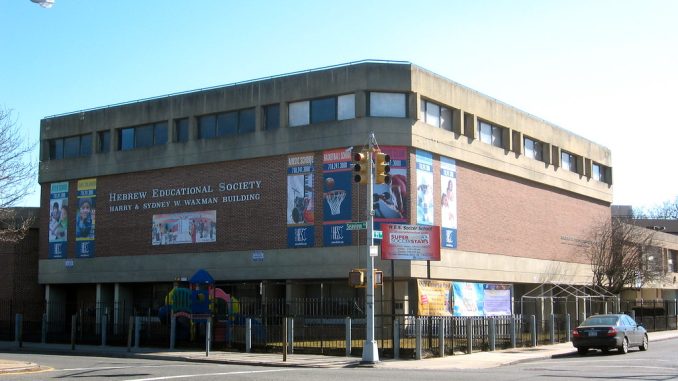
By TYRELL INGRAM
BROOKLYN- The children’s programs at the Hebrew Educational Society in the Canarsie neighborhood are making a comeback under a new normal.
After the COVID-19 pandemic, more kids are starting to return to the summer and after school program to take part in swimming, arts and crafts and other activities.
“Everything is back to normal now,” said a counselor whose alias is Bill Goldberg. He has worked at the Hebrew Educational Society for five years.
At the beginning of the pandemic, the building shutdown for two months. Once the building reopened, the children’s programs had to adjust to social distancing and masks.
He estimated about 500 kids attending the programs before Covid.
After it reopened, he estimated that about 100-200 kids in total had attended the programs.
“When we opened back, we had to work at 25% capacity, so we literally had one classroom and 10 kids (at a time) at most,” said Goldberg. “So for the majority of the activities, we tried to keep it counselor based because we didn’t want a lot of travel throughout the building. The only activities that we do outside of the classroom are gym activities.”
The after school program was hit hard due to shutdowns and social distancing. Counselors also make sure that kids wash their hands before and after every activity.
“During covid, there was only one big group for the after school program,” said an alias named Lucy Gardner. She is another counselor at H.E.S. “There were about 30 kids in total throughout the peak of the pandemic.”
After shutdowns, some of the kids felt worried coming back to H.E.S.
“Some of the kids were upset about the situation, but they just got over it,” said Goldberg. “It was a rough period for them to adapt to it. There were a few who were super scared of it and there were also the few that just ignored it completely.
“We just had to keep guiding them and to remind them to keep their mask up, wash their hands every 10-15 minutes, and between every activity, we would wash our hands.”
In addition, some of the kids felt shy interacting with one another, according to Gardner.
Some of the activities changed in order to prevent the spread of Covid. That was particularly true in the gymnasium.
The gym would be divided into separate “quadrants”. Mainly, each group would spread out and form under four basketball hoops. That way, the kids can participate in many games while not having too much contact with each other.
One of the games that they would play is knocking down a tower constructed with hula hoops by throwing a ball at it. Another game would be a makeshift Pac-Man game where the kids would walk on a line while being chased.
Then there’s the swimming activity.
“We didn’t have swimming for a while until we got the okay to swim without the mask because our main concern is drowning,” he said “From what I understand, they got the okay that the chlorine in the water would protect the kids from Covid.”
For the arts and crafts activities, the kids and counselors had to spread out for social distance purposes, as well as for music activities.
If someone’s child tested positive while they are in the organization’s building, the child would be placed in another room while being supervised.
The planned trips for the kids were also impacted by the pandemic.
“During the covid year, we didn’t have a planned trip. The most we did was walk to Seaview Park with a gym director, have an activity, and walk back to the facility,” the counselor said. “Last year, we started going out on more trips. We tried to keep one group in the building at all times, but we didn’t take out all of the groups.”
The groups are separated into three main groups. The smaller kids are called juniors, children ages between eight-years-old and 12-years-old would be considered as seniors, and kids 13-years-old to 18-years-old would be considered as teens.
The groups have designated days throughout the week when they have trips. The trips vary between outdoors and indoors.
“We’re still keeping the mindset of ‘if we do an indoor trip, that we have to take over the facility,’ solely because some of the parents are still uncomfortable,” Goldberg said. “For example, if we go to a trampoline park, we have to be the only group inside of the trampoline park for our designated time. If it’s an outdoor trip, we don’t have to take over the whole facility.”
In terms of the staff, a few of them have left because they felt uncomfortable working during Covid, according to him.
“We also didn’t have many specialists come in during covid,” Gardner said.
The rest of the staff have stayed and have adapted with the new rules and regulations of the building.
The organization has since used three rooms for the kids to do activities. As well as having about 25 kids per room.
After one group of kids are done with their activities, they make sure to thoroughly clean up each room before the next group of kids come to the classroom.
“In September 2020, you started seeing more people coming back because by that time, the vaccine was out,” he said. “We slowly started seeing staff come back and we started seeing kids coming back as well.”
In 2021, H.E.S had an estimate of 300 kids in attendance.
“We have about 130 applicants in the after school program right now,” Gardner said. “We separate them into six different groups now instead of just having one small group of kids in one classroom.”
The rest of the facility was unable to answer questions due to a lack of permission.
However, the counselors expect there to be 500 kids by the end of 2022.
